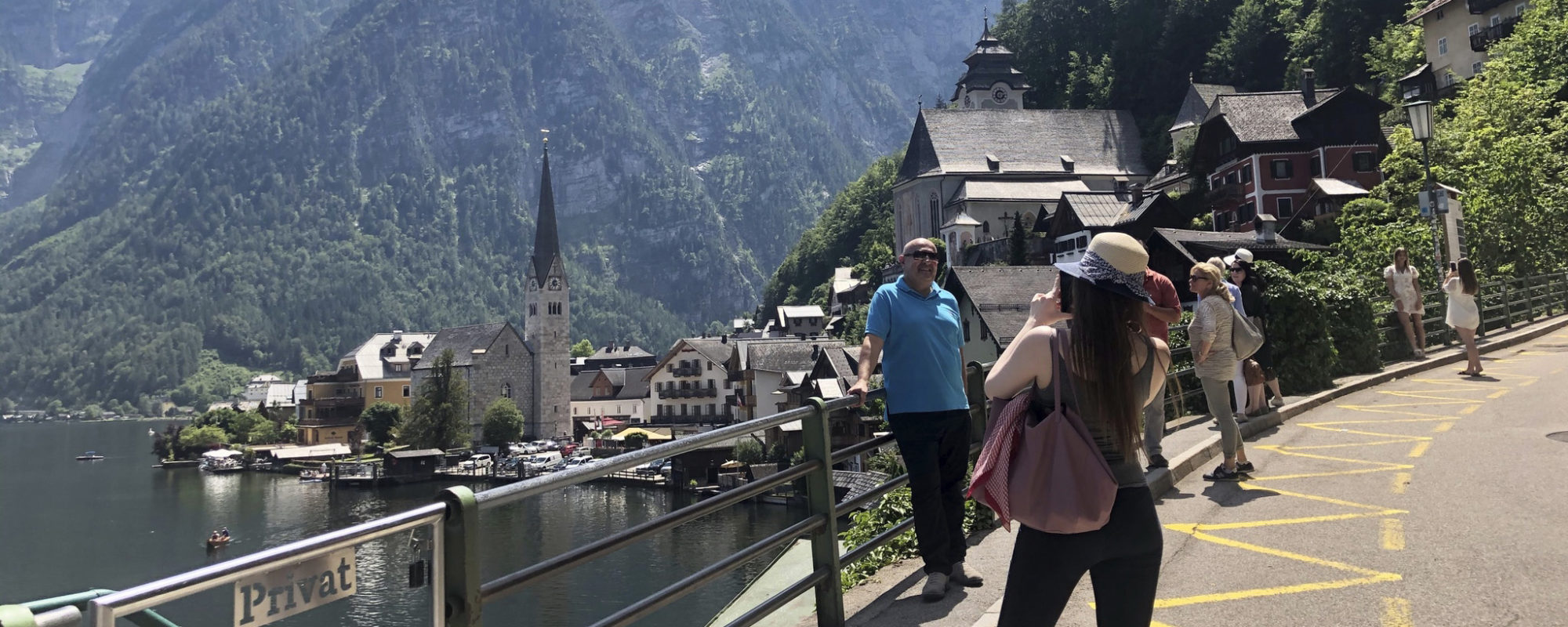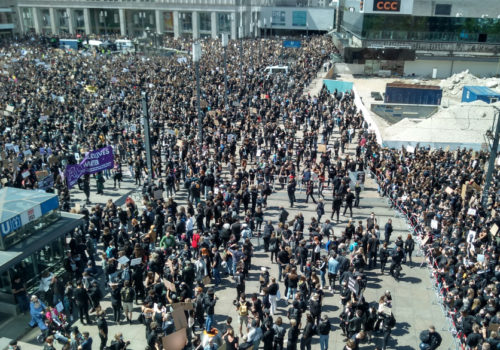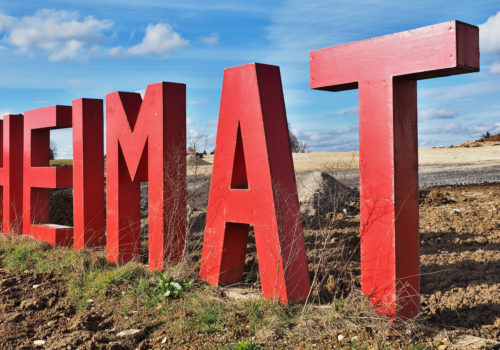NUSSDORF AM ATTERSEE, Austria — Along the banks of one of Austria’s largest lakes, the silhouettes of mountains tower over water so clear and blue it looks more like the Mediterranean than the Alps. Sailboats rocked gently back and forth in the waves near the harbor in late June as fluffy white clouds floated through the bright blue sky. Dozens of visitors lounged in chairs on the grass between brief swims in the chilly, clear water, while others—including me—sat enjoying the view under umbrellas at the nearby beach café.
Back in January, my boyfriend Michael and I had discussed taking a summer trip to Attersee, one of several picturesque lakes in Austria’s central Salzkammergut region. Of course, our plans were put on hold a few weeks later as the coronavirus spread rapidly across Europe. Stuck at home in Berlin this spring, with hotels shuttered and national borders closed for months, visiting Attersee seemed like a distant prospect.
But a few months later, here we were, having some semblance of the summer holiday we’d hoped to take. We hiked through the mountains above Nussdorf, one of the handful of small towns along the lake; dipped our feet in the lake and read books on lounge chairs on its banks; and casually met and chatted with other travelers after a dinner of traditional Austrian Schweinsbraten and Semmelknödel.
We were hardly the only ones: Our hotel in Nussdorf was fully booked and getting a table at one of the town’s restaurants for dinner was difficult without a reservation. Most of Austria’s foreign tourists come from neighboring Germany and other EU countries, so many of those who regularly vacation on Attersee have ended up coming this year. About an hour’s drive away, the tiny town of Hallstatt, often cited as a prime example of overtourism, was nearly as packed with visitors as it would have been on a pre-coronavirus summer day—they were just mostly from Austria and other neighboring EU countries rather than China and the United States.
And in spite of everything these last few months during the days and weeks spent at home, the whole experience really did feel almost normal. It wasn’t until we dropped off our rental car back at the eerie, nearly empty Vienna airport that I realized I hadn’t worn a face mask in the entire three days we’d spent in the mountains. At times, I had even managed to forget we’re in the midst of a global pandemic.
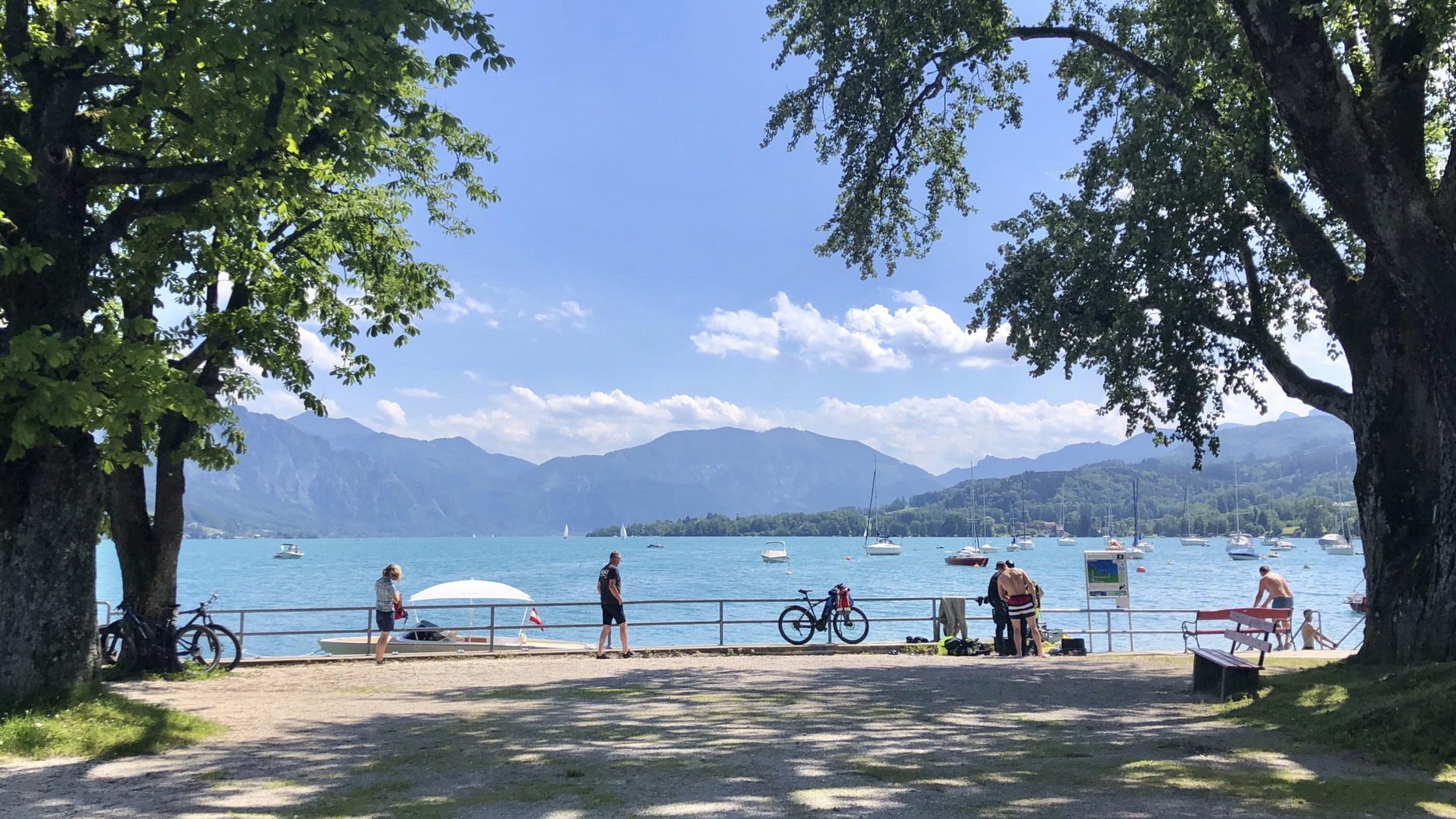
Such an ability to let one’s guard down seems like a universal desire these days whether one’s country has things under control or not: The last few months have involved making so many big and small decisions every day, constantly weighing the risk of infection in our minds. After so much time stuck largely at home, everyone longs for a glimpse of normalcy.
But I’ve been surprised by how quickly that shift occurred here. Back in April, I remember talking with friends about how hard it was to imagine sitting at a restaurant, or when we would be comfortable traveling again. My first time doing anything again—getting on the U-Bahn, sitting and writing in a café, hugging a friend—felt extremely odd. The second time already felt less strange; by the third time, it was almost as if the months at home never happened, and as if I’d never stopped doing these things in the first place.
* * *
Like much of Europe, Austria is emerging from the pandemic and returning to (nearly) normal life. Restaurants have been open since mid-May and hotels reopened later that month. As of mid-June, masks are no longer required in shops and stores, and borders to all eight of Austria’s neighboring countries opened back up. The same process was underway in Berlin when I left in mid-June, but Austria feels a step even further along.
Eating at restaurants, at least outside, is perfectly normal here: The city of Vienna issued all residents 25-euro gift certificates to encourage them to eat in local dining establishments. And getting together with friends or family in groups has become commonplace again. The day I arrived in Vienna was both the first one on which the German-Austrian border was fully open and also Michael’s birthday. When meeting friends that evening, all of whom I hadn’t seen in months, some even greeted me with hugs. (The two-cheek kisses usually used in Austria still seem, thankfully, a bit too much.)
Although Austria came through the pandemic quite well overall, the country had a difficult start: Hundreds of coronavirus cases across multiple European countries were traced back to the Alpine ski resort town of Ischgl, where close quarters and apres-ski partying led to hundreds of infections among visiting tourists. Local officials reportedly downplayed the threat and dragged their feet quarantining the area, leaving Ischgl’s bars and resorts open for days after it became clear cases were originating there.
Since then, however, center-right Chancellor Sebastian Kurz’s government imposed restrictions here that were similar to but a bit stricter than Germany’s well-publicized and highly praised response. Anti-coronavirus measures, including the closure of borders, most shops and all restaurants and bars, were announced on March 13 and went into effect on March 16. Two weeks later, on March 30, Austria began requiring masks in all shops and on public transit. Officials imposed heavy fines on those who didn’t comply with the new restrictions, leading to what, at least anecdotally compared with Berlin, feels like a higher rate of compliance here.
As of Monday, 18,285 people in Austria have tested positive for the coronavirus, and 706 people have died. Like in Germany, new cases have remained relatively low in the wake of reopening, although there has been an uptick in recent days: The current number of active cases rose above 1,000 on Monday for the first time since May 19.
With a population of just under 9 million people, the country on Monday reported 85 new cases nationwide; in May, that number had been as low as 9 cases per day. Some localized outbreaks, including at a Rotary Club meeting in Salzburg and in a handful of meat-processing factories in Upper Austria, have contributed to the increase in cases.
The Innsbruck-based infectious disease expert Günter Weiss, a member of the Austrian Health Ministry’s coronavirus task force, told the Austrian Press Agency the uptick in cases is no cause for major concern, saying it is “not a second wave.” “It is simply a matter of quickly finding or identifying the clusters and then sealing them off,” he said.
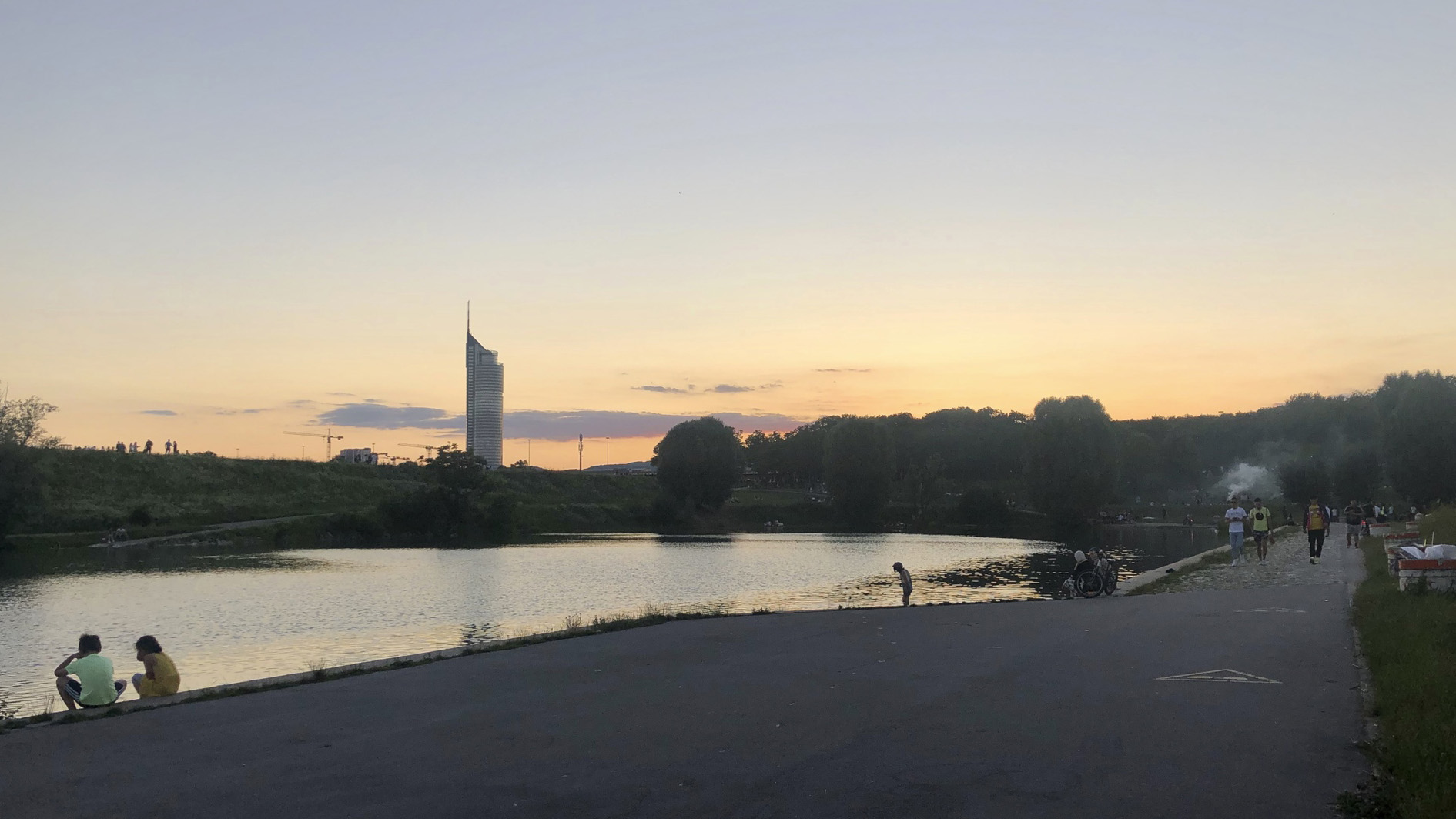
To celebrate July 4th last Saturday, I went with some friends to the banks of the Danube for a barbecue. Families staked out spaces near us to grill at tables or on the grass, while parents crossed back and forth to the water with their children. We had purchased a tiny grill and lugged it across the Danube along with more food and drinks than six people could possibly consume, and set up shop under a tree not far from the water. The weather was perfect, warm enough to swim and sit out past sunset grilling, roasting s’mores and talking.
Though this was not my first Fourth of July outside the United States, it was by far the strangest: Barbecuing with a group of friends was the kind of typical summer activity that, like our trip to Attersee, I hadn’t assumed would be possible this year. Watching case numbers rise again rapidly across many parts of the country, I feel a bit guilty doing so many of the things my friends and family back home can’t envision for a long time to come.
Even here, there are still so many things we don’t know about the pandemic’s future: Whether Austria, and Europe more broadly, will be hit with a second wave; when a vaccine will be available; when my American friends and family will be allowed to enter Europe again. But unlike in the United States, reopening hasn’t led to a massive uptick in cases; any shifts here seem to be related to specific outbreaks, and officials in Austria and Germany have sought to locally tighten restrictions to ensure they don’t spread further.
That uncertainty will likely be around for the foreseeable future. But for the moment, I’m grateful for this period of normalcy—for the chance to see friends and travel to new places, and witness how much of life can indeed return to the way it was before the coronavirus arrived to change everything. After all the debates about how the coronavirus could permanently change the way we live, it’s remarkable how easily our new normal is reverting back to the old one.

